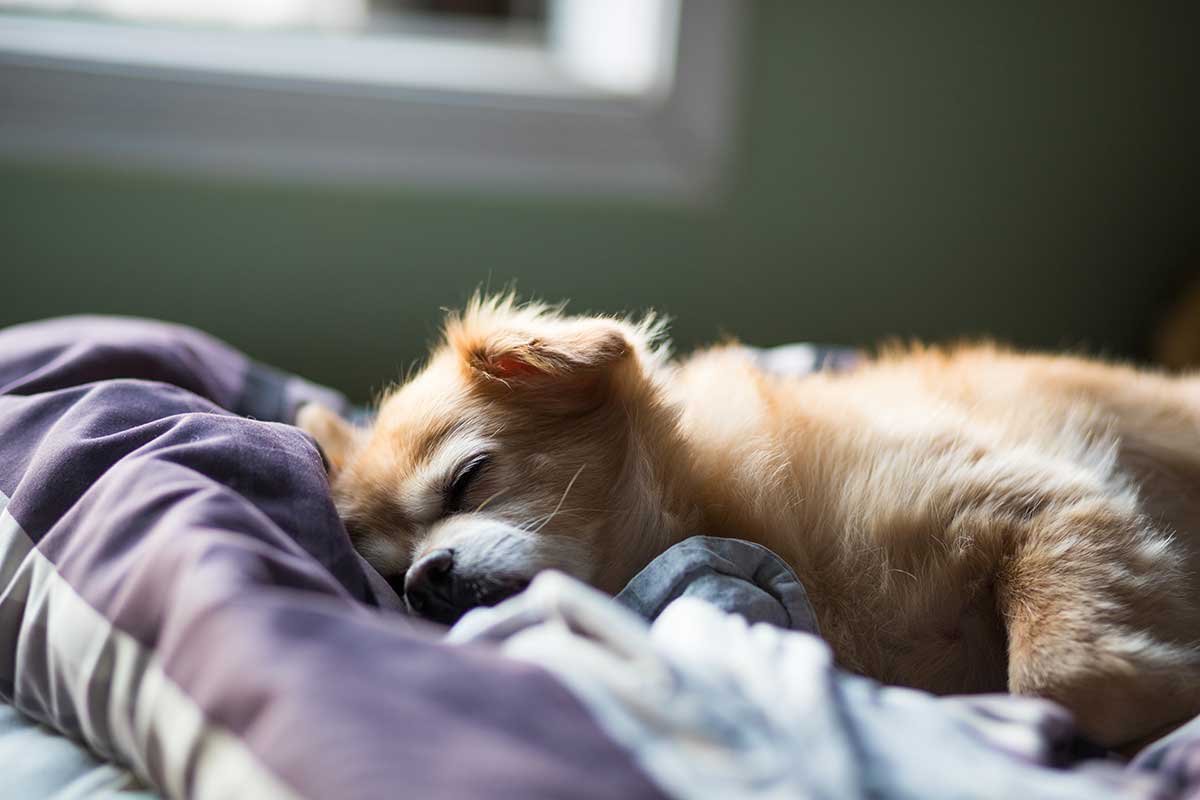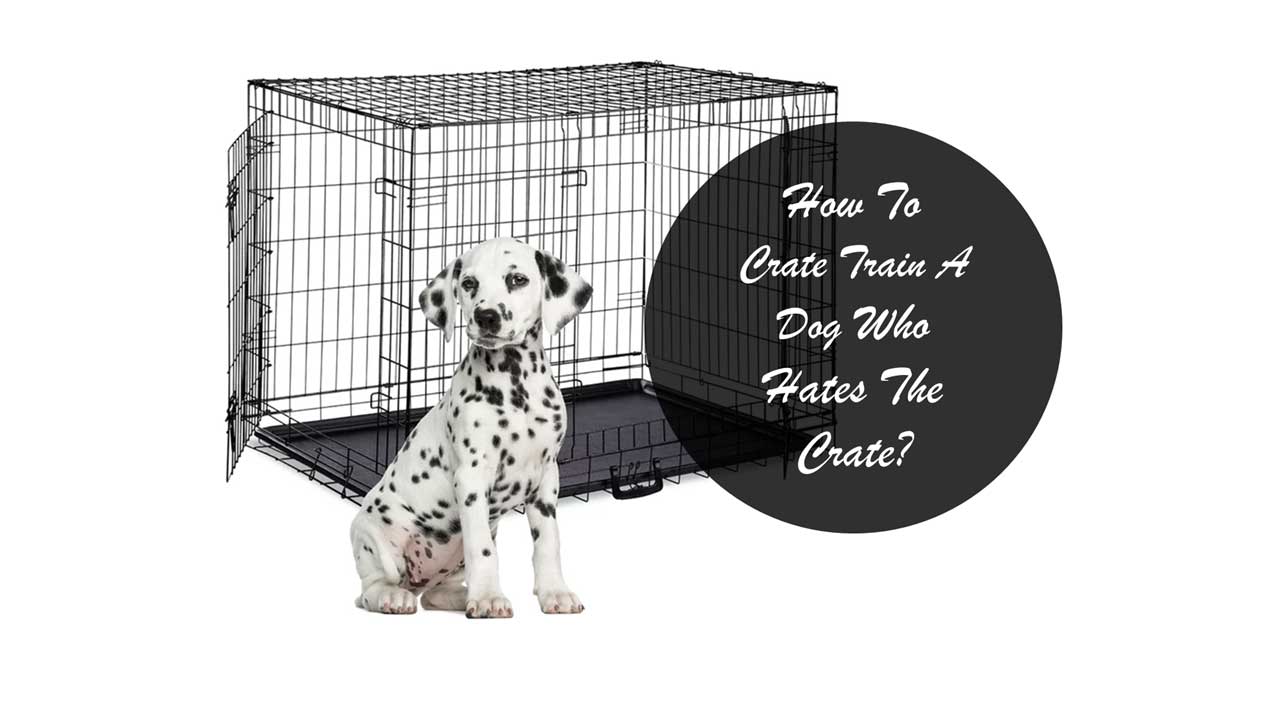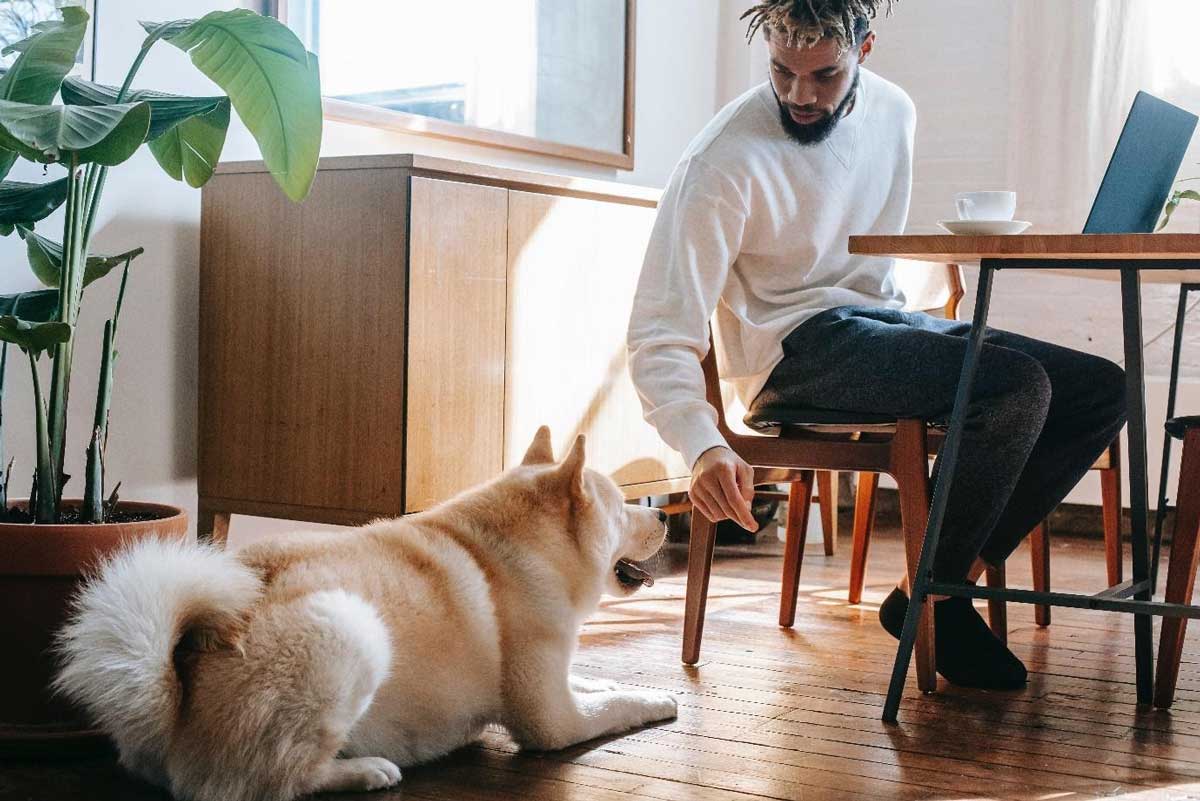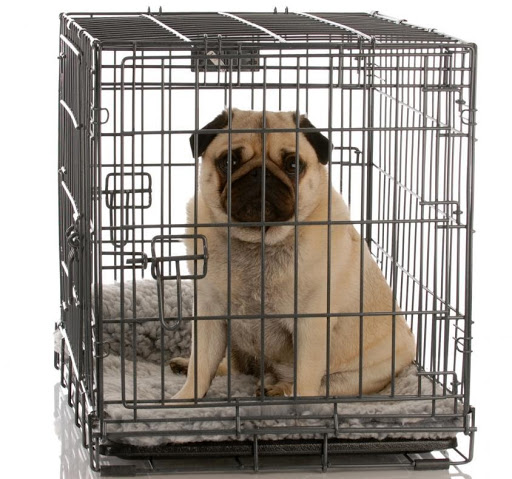Being a new dog owner comes with significant responsibilities, especially if you want your little puppy to feel comfortable and safe in its new environment. As a new dog parent, crate training is a good strategy before you give them limitless access to your home. They need to learn the house rules first.
No one wants to deal with little puppy accidents in the home; therefore, it goes without saying, a new dog owner needs to learn how to crate train a puppy correctly.
Proper crate training allows your dog to feel secure in their comfortable space which gives them confidence and calms anxiety. However, it is essential that you only associate happy behavioral associations with the crate through the use of treats, comfort toys and games.
Many new dog owners mistakenly view the use of crates through human eyes and link it with being locked up in a jail cell. Crate training being cruel is another wrong assumption – dogs are naturally denning animals. Other dog parents are outraged and believe crate training to be outright cruel.
Dogs are denlike animals. They enjoy being in small, enclosed places and find safety and security living in a den when they are sick, pregnant, and need shelter from predators.
In our modern living arrangement, a dog has no natural predators, but loud strange noises can still startle them. The golden rule is that a crate is a happy place and a safe spot in which your dog finds rest. Please keep this in mind at all times.
If you’re at all curious about crate training a dog, regardless of the dog’s age, you’ve come to the right place. In this article, I share with you how to ‘crate train’ a puppy or dog.
How To Crate Train A Dog Who Hates The Crate?
You can crate train your dogs at any age. The same methods are used to train adult dogs or puppies. A crate provides a comfy spot for your puppy, and it will love you for it.
Crate training your dog may take some time and effort as some dogs may hate crates in the beginning. However, crating can be useful at times when you need to travel or leave the dog alone at home. Crating is especially useful when you go to work or to sleep at night.
For full disclosure, I’m not a professional dog trainer, dog whisperer, nor behaviourist. I’m simply a loving dog owner who has read a lot, experienced a little and can share what has worked for me.
Here we go! The crate training process
Let us start with a definition of crate training. What is crate training? You ask. Crate training is the process of introducing a dog or puppy to an indoor dog kennel, intending to recreate a denlike environment to get them to feel safe and protected.
If you’re considering crate training, there are some critical considerations. The first being, crate training takes advantage of the pup’s instincts to seek out a comfortable, quiet and safe space in times of anxiety.
Loud noises at home can become overwhelming. Now I will kick off the process on how to crate train a dog who hates the crate.
Step 1: Crate Placement And Preparation
We all want a well-behaved dog that doesn’t chew on everything and relieves itself outside. Proper crate training will help you in this department. You will love and appreciate your puppy even more for their obedience and training.
In order to get crate training off to a good start, we have to find a suitable location in the house to place the dog crate. It needs to be out of the way and be in an area where the family spends lots of time. Such a location could be the family room or near the kitchen. Remember, dogs are social; they are man’s best friend after all.
Position your crate away from direct sunlight and in a spot where it won’t become a trip hazard or an obstacle. The pups do not appreciate when kids or adults keep bumping into their crate while they rest.
Not that you find the location it is time to make the crate comfortable. Put down a lovely soft betting in the crate for the pup to sleep or rest. An old blanket, towel or dog bed is perfect. If you want your dog to be more comfortable, you can put something (maybe a towel) with your scent on it.
Wire the door to the crate shut. You do not want it to swing back or forth and startle the doge. It should be a place free from stress or anxiety.
Step 2: Introduce Your Dog To The Crate
Dogs are naturally curious animals, so let them explore their new crate without force. They may even fall in love with the new crate and will start sleeping in it right away. Wow, if that is the case with your dog, then you are lucky, and the crate training process will be so much quicker and easier.
On the other hand, if your dog hates the crate, you will have to endure some challenges. Not so much of a big challenge, but you will have to follow a few more steps. Do not be surprised if this process could take a little longer than expected.
Training can last from a few days to a few months in some cases. As the adage goes, you can’t teach an old dog new tricks, well you can, but it will take much longer. The older the dog, the longer the process may take.
How to introduce your dog to the crate?
Gently lead your dog over to the crate while talking to it with an excited tone of voice. Using that same tone of voice you use when you are playing and giving encouragement. The dog will pick up on your excitement and associate a good feeling with the crate.
Bribe your dog to get the response you want.
A little bribe is a good thing and can go a long way in convincing your dog to use the crate. Get some of their favorite treats and put a small portion of treats close to the crate. Put individual pieces in a straight line leading up to the entrance of the crate.
With their favorite treats out, this will surely give them the necessary motivation and encouragement to approach the crate. As soon as the dog displays acceptance to the creature, it would be time for a bit more treats.
It is like this, as the dog seems comfortable, place a bit more treat just inside the crate. If they enter, put a bit more further back in the crate until the pup is at the extreme back of the crate. There is no rush here; it is not a race to crate train a dog that does not like crates – easy does it.
What to do if the dog refuses to use the crate?
If the dog refuses to go all the way inside the crate at first, it’s OK. Don’t force progress; it has to be a positive crate experience for the dog.
Just try tossing a few more pieces of treats into the crate. Try not to put any other treats around for the dog to get at. Continue giving treats in the crate until the dog willingly enters to get the goodies.
Suppose the dog isn’t interested in treats and is still not willing to use the crate, up the ante and include their favorite toy. Try tossing their favorite toy in the crate. Tossing a favorite toy in the crate got to work, who don’t like their favorite toys and favorite treats.
Step 3: Feed Your Dog It’s Meals In The Crate
Now that your dog is enjoying their treats in the crate and playing with their favorite toy there you can start feeding them their main meals in the crate.
Again, you must create a positive association with the crate. Please take it easy at first, so start feeding your dog near the crate.
When the puppy starts eating close to the crate up the ante and put the dog bowl in the entrance of the crate, or as far enough in the crate as they express a willingness to go.
Each time you provide feed, place the bowl a little further back in the crate until they are comfortable at the back.
If they remain reluctant to enter, put the dish only as far inside as they will readily go without becoming fearful or anxious. Again, easy does it, make the process pleasant and slow.
If your dog is readily entering the crate when you begin Step 2, place the food dish at the back of the crate.
Step 4: Close The Doors Behind Your Dog For Short Periods
As soon as your dog is comfortable standing inside and eating their meals, in the crate, it is time for the next step – to crate the dog.
At the beginning of this step, try gently closing the door behind your pup as he or she is eating their meal.
The first few times you attempt this, open the door as soon as they’ve finished eating the meal. With each successive feeding, leave the door closed a few minutes longer until they’re staying in the crate for 10 minutes or so after eating.
If they begin to whine, it means that you have increased the length of their stay in the crate too quickly. Next time, try leaving your pup or dog for a shorter time in the crate.
If they do whine or cry in the crate, don’t let them out immediately, wait until they stop. When the dog stops whining, let it out. It may be painful to hear your dog complain, however, do not let out the dogs when they whine, or they will learn by whining is the way to be let out of the crate and will keep doing it.
Step 5: Crate Your Dog for Longer Periods
Your dog is now eating all their regular meals inside the crate and displays no signs of fear or anxiety. Eating in the crate may be a sign that you can crate train them for longer periods. We are taking things one step at a time. You want to crate train your dogs while you are at home. So that later, you can leave them in the crate while you go to work.
How to crate train your dogs for more prolonged periods?
Stand next to the crate and call them over and toss a piece of treat close to the crate. When the dog eats that piece, give the command crate and encourage the dog to enter the crate. You can point to the crate with a treat in your hand.
After the dog enters the crate, lavish it with praise, give it a treat and close the door behind it. Don’t let the door bang to frighten the dog. Again, easy does it.
What next? Go quietly to your chair near the crate and sit for five to 10 minutes, then go into another room for a few minutes before returning. When you return, sit quietly again for a few minutes before letting them out.
Repeat this process several times a day, gradually increasing the length of time you leave them in the crate. You should also increase the length of time you’re out of sight. You are training the dog not to have an anxiety attack when you are out of sight.
When your dog can remain quietly in the crate for a half-hour with you out of sight, the training is almost over. If everything is done properly, you will not be able to leave them in the crate while you leave the house for a short period.
Do not be disappointed if the process takes weeks. The dog already hates the crate, so please take your time.
Step 6: Crate Your Dog When You Leave Home
Now that your dog can spend more extended periods of time in the crate without being able to see you in the same vicinity, it is time to increase the length of time in the crate.
So you should be able to leave the house without them feeling anxious in the crate. You can therefore leave them in the crate for short periods unattended when you leave the house. Don’t just leave them alone; leave them with something to play with.
The best bet is to leave them with a few safe toys in the crate to keep them entertained for a while. Leave enough food and water so that they do not starve or die of thirst.
How to get the do in the crate?
Lead the dog towards the crate using the trained command and a treat. Do not be overly excited; you do not want to get the pup in a playful mood and then leave the dog alone. With your dog, you have got to mix it up and not create a predictable routine.
You do not want to give your dog the idea that you are about to leave them alone in the home for a while. You got to change up your ‘getting to leave routine’, always keep them guessing.
How to make your routine unpredictable and keep your dog guessing?
It is easy to make your routine unpredictable to your dog. All you need to do is get ready to leave the house at different times before you have to go.
Sometimes you get ready five minutes, 10 minutes, 15 minutes or even 20 minutes before you have to leave the house. Your dog should not be able to associate being placed in the crate with you going through the door.
The best way to leave is just to go, no prolonged emotional farewell, hugs, kisses or anything like that. Praise your dog briefly, toss a treat in the crate to reinforce the behaviour of entering the crate, close the gate with the dog inside and leave quietly.
What to do with your dog when you return to the house?
Keep your return to the house low-key, avoid increasing their anxiety by being overly enthusiastic when you return.
Let your return seem like a none event, don’t reward your dog for excited behavior by enthusiastically responding to them.
Continue to crate your dog for short periods after your arrival. You don’t want your puppy to associate crating with being left alone, that would be a bad idea.
From time to time, when you’re home, vary the amount of time that you crate – letting them stay a little bit longer after your arrival is a good idea.
Step 7: Crate Your Dog Overnight
Now it is time to let your dog sleep in the crate at night. You do not want them to be roaming around the house unsupervised. The first step in letting your dog sleep overnight in its crate can be a difficult one in the beginning.
We start by putting the dog in the crate by giving the regular command and producing their favorite treat.
Place the crate somewhere near the bedroom where you are sleeping, so that they know you are nearby and feel protected.
During the night, listen out for the whining sound of the dog. The whining sound normally indicates that it wants to go outside to relieve itself.
As soon as your dog starts sleeping comfortably near you throughout the night in the crate, you can gradually move it further and further away until it is in your preferred location.
The process should be the same for older dogs as it is for puppies. You don’t want them to associate the crate with social isolation.
Pitfalls or things to look out for
The primary use for a crate is housetraining. Always create a positive association with the crate, you can use treats and games to achieve this.
Your dogs should see the crate as a positive place that belongs to them. A crate is not a punishment zone and should never be managed as such..
Recommended products
A dog crate is an enclosed space made of a thick wire or fabric with either one or two doors and comes in different sizes.
They have slide bolt latches for security. The fabric crates use zipper enclosures and are perfect for small dogs. Read my article about recommended dog crates.
Conclusion
We all want a well-behaved dog that doesn’t chew things up, especially your new shoes and sofa. You also prefer dogs that go to the bathroom outside — and crate training your dog is an integral part of that.
Crate training provides a calming experience when handled correctly. A crate provides a protective space in which your dog can relax and feel secure — and indeed be safe.
When you are planning to transport your dog a crate is a safe way of transporting your dog in your car, or on planes. Using a good quality dog crate can be a great way to give your pet a safe space and of course keep your house nice and tidy.
Thanks for visiting dogbabe.
Reference
https://www.humanesociety.org/resources/crate-training-101
https://www.battersea.org.uk/pet-advice/dog-advice/how-crate-train-your-dog














